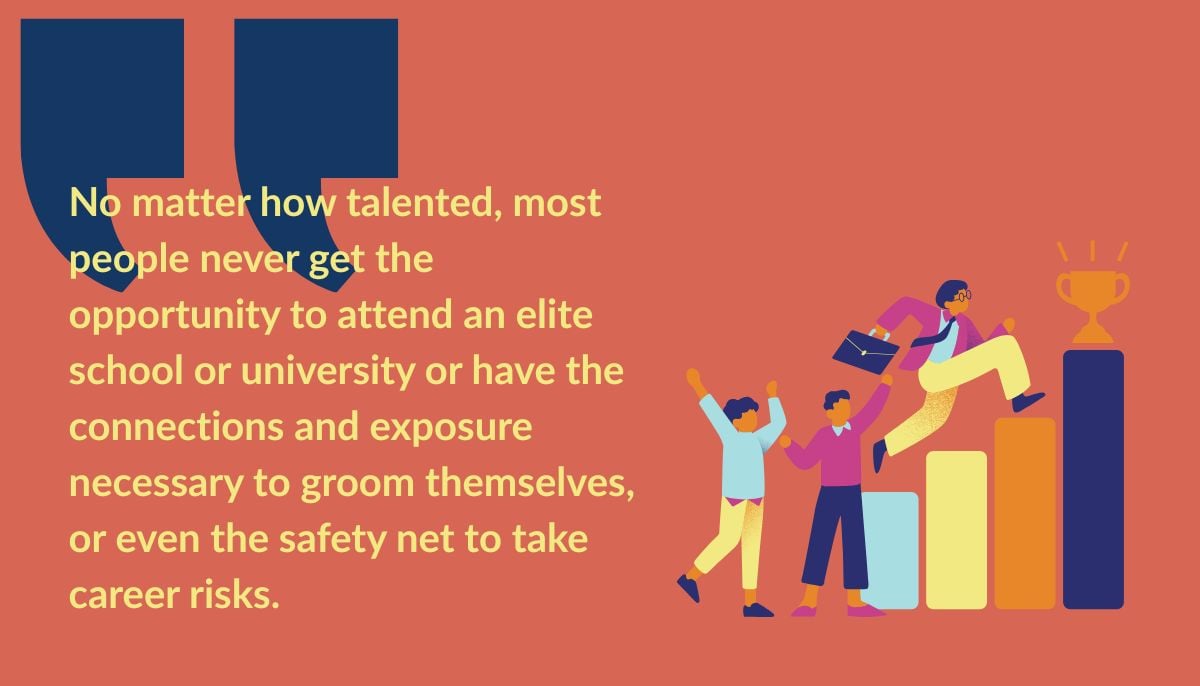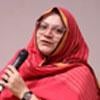Myth of merit? Let's talk about who gets hired and who doesn't
If everyone on your team looks, thinks, and acts the same, you’re not building a business; you’re building an echo chamber

“Why would we want to spend money on finding women to hire when our business is already thriving?”
“You need to stop shoving your feminist agenda down our throats.”
“Women only get ahead in corporate because of their gender, looks, and inappropriate connections.”
“If inclusion actually worked, businesses would already be doing it. They’re not stupid like you.”
These were some of the milder responses I received after posting on LinkedIn about the false promises of gender-blind hiring and the illusion of meritocracy. Some replies were nastier — replete with name-calling, gaslighting, and even threats of violence. All because a woman dared to share a research-backed opinion online.
The irony isn’t lost on me.
And yet, amid the vitriol, there were civil messages too — from people who shared their own stories and frustrations. That’s what kept me going. I could’ve taken the easier route — deleted the post, raised some adopted and rescued cats with my husband, and just moved on. But as a neurodiverse person, sometimes my compulsion to over-explain wins over my chronic impatience with bigotry.
So, here we go — let’s open this can of worms.
What 'gender-blind' really means
Let’s start with the term gender-blind. Many think it means they “don’t see gender” when making hiring decisions. But in reality, gender-blind hiring involves deliberately removing any indication of a candidate’s gender from applications to focus purely on skills and experience.
Now ask yourself: how many companies do this?

While we lack formal data for Pakistan, conversations with human resource (HR) leaders confirm that most companies here are nowhere near equipped with the tools or training to implement genuine gender-blind recruitment. So, when organisations claim they are gender-neutral, those are just… claims.
The illusion of meritocracy
Next comes merit-based hiring — the ubiquitous go-to catchphrase in today’s corporate playbook. Everyone loves talking about “the top 1% of talent” and how their organisations are run purely on merit. So, how many of you have seen people being hired because of their personal and professional references, political affiliations, or demographic characteristics?
We don’t live in a fair world. There is no level playing field.
Talent and potential often get lost because of socioeconomic status, gender, religion, disability, or simply because someone didn't have the right connections or the money for an elite education.

It can happen due to socio-economic or demographic differences, and also because our systems are designed to reward the privileged and the elite.
No matter how talented, most people never get the opportunity to attend an elite school or university or have the connections and exposure necessary to groom themselves, or even the safety net to take career risks.
That's laughable in a country where nepotism and elitism aren't flaws — they're features of both the corporate and political sectors.
What actually happens during hiring?
Let’s break down the hiring process as it often plays out in Pakistan:
- Candidates are rejected because they aren’t from the same school or the top school as other people in the organisation.
- They are never called for an interview because they lack a university degree, despite having ample experience.
- Women are rejected because the job is high-pressure, and it is assumed that women can’t work in a high-pressure environment. Or if the company has never hired women or has people who aren’t comfortable working with women, there won’t be any calls made to any female candidates.
- Candidates are rejected because they lack the necessary network connections and do not have a high-profile endorsement or a reference within the organisation.
- Credentials are seen as a sign of expertise, and if you don’t have a bunch of expensive certifications, you won’t be called for an interview.
- Recruitment teams are often not trained to recognise unconscious bias or are not well-versed in the industry or job they are hiring for, so they rely on automated tools and other shortcuts to shortlist candidates.
- Automated tools, such as ATS, excel in certain areas, including tracking the recruitment process. However, their shortlisting and matching algorithms are still not sophisticated enough to match the effectiveness of a skilled recruiter. Consequently, over-reliance on these tools can create a leak in the talent pipeline.

In one of the most well-known studies, "The Impact of Gender on the Review of the Curricula Vitae of Job Applicants and Tenure Candidates: A National Empirical Study," researchers sent out the same résumés for the same position, only altering the names to suggest gender. The male applicants were more likely to receive callbacks and better offers of pay, despite identical qualifications. The bias exists. The statistics are here.
So if by any luck, you did manage to get called back, you would be required to sit before an interviewer or a panel. If you are a female and there is an all-male panel, you can bet that there is a possibility you might end up answering some extremely invasive and personal questions that are illegal in most countries across the globe.
Interviews can be brutal — if you're not a man
For women, transgender individuals, religious and ethnic minorities, or differently-abled individuals, the interviewing process can be brutal because you will find yourself in a position where your identity will become attached to your competence. You may find interviewers more interested in your identity instead of the value you offer. That's why ensuring the interviewers are aware of their own biases and are not racist or sexist is an organisation’s foremost responsibility.
So, when I asked the commenters angry at my post, who claimed that being mindful of inclusion goes against merit, why they assume that people who are rejected or not even considered for the job due to their identity are not smart enough or skilled enough, they had no answer. I heard no coherent argument. Some got angrier, others started with whataboutism. Do we collectively think that talent, intelligence, work ethic, and skills are only given to people with privilege and money?
Companies have their own hiring practices that they use to make this process simple, fast, and as cheap as possible. Therefore, spending time to contact a range of talent and then interviewing them on merit is not particularly appealing and can be costly. Diversity of thought, experience, and exposure is needed to innovate, so you require people who can provide you with insights that you don't possess and access to networks that you are not a part of. Companies prosper when they know their customers more and grow and diversify when they can spot opportunities that others cannot.
Real stories from Pakistan’s corporate sector
As the leader of one of Pakistan’s largest women IT professionals' communities, I hear these stories constantly. Here are just two:
1. The invisible minority
A highly qualified community member — a religious minority with a Muslim-passing name — aced her technical interviews. But during the HR round, her dietary needs were brought up as an “issue.” Even after offering to bring her own food, she was ghosted. Later, HR said the team just wasn’t “comfortable” hiring her.
2. The glass ceiling, early edition
Another member applied for a C-level role but was offered a junior position. Why? Because management said ‘she was not fit' for the high-pressure leadership role. The job went to a man with less experience, but apparently “more potential.”
These aren’t rare cases. They're the norm.
It goes without saying, there are companies with the face of an equal-opportunity employer, but in reality are exclusionists at heart. Women are often politely nudged into support roles, kept off leadership trajectories, and HR is more worried about their plans to start families than their actually leaving for better roles — something that would be unthinkable in a fair process.

The participation rate of the Pakistani female labour force nearly doubled from around 12.55% in 1995 to about 24.46% by 2023, according to World Bank data. The country also ranks very low globally on gender equality indices, e.g., 145th out of 146 countries on the Gender Gap Index 2022.
Why inclusion is not charity — it’s strategy
According to a 2023 McKinsey & Company report:
- Companies in the bottom quartile for gender and ethnic diversity are 66% less likely to financially outperform their peers.
- Firms in the top quartile for gender-diverse boards are 27% more likely to outperform those in the bottom quartile.
- For ethnic diversity, the figure is 13%.
Innovation requires diversity of thought, lived experience, and access to different communities. If everyone on your team looks, thinks, and acts the same, you’re not building a business; you’re building an echo chamber.
So, what now?
If we want to do better — and be better — we need to start by fixing how we hire.
- First things first, if we really want to innovate and grow, we need to rethink the hiring processes in our organisations.
- We can start by investing our resources in better outreach to attract a more diverse pool of candidates and ensure that our recruitment teams are trained to recognise unconscious bias and understand the skill set and personality traits required for the roles they are hiring for.
- Ensure that our interviewing panels are diverse and score candidates on objective criteria, rather than their preconceived notions, i.e., vibes and feelings.
- Need improved policies and practices to support employees in their personal and professional lives, including parental leaves, mentorship programmes, flexible and hybrid work schedules, employee resource groups, childcare facilities, anti-harassment policies, pay transparency, and objective and transparent appraisal and career advancement programmes.
Global glance
As far as the global sentiment is concerned, the executive orders on DEIA by Trump’s administration had a massive impact on the discourse around inclusion. Instead of being an actual, intellectual, data-driven, and empathic conversation, it has become a rage-bait topic.
Another important aspect is to understand that when we talk about inclusivity, we are not asking for handouts, quotas, tokenism, or hiring people based on their diversity scores.
Call to action
Pakistan needs all its people to survive this current global economic situation so that we can eventually thrive as a nation. We need an equitable future for ourselves and the coming generations because this is the least we owe them.
We can’t build a better workplace, economy, or society without tackling these hard truths. And no amount of name-calling or threats will silence those of us who are determined to keep speaking them.
Faiza Yousuf is a software engineer with over 15 years of experience building tech products and teams. She spearheads some of Pakistan's most prominent initiatives to enhance women's inclusion in technology and the economy. Her initiatives, namely WomenInTechPK, CodeGirls, and CaterpillHERs, have impacted over 15,000 women and girls nationwide. She posts on X @FaizaYousuf
Header and thumbnail image by Canva




